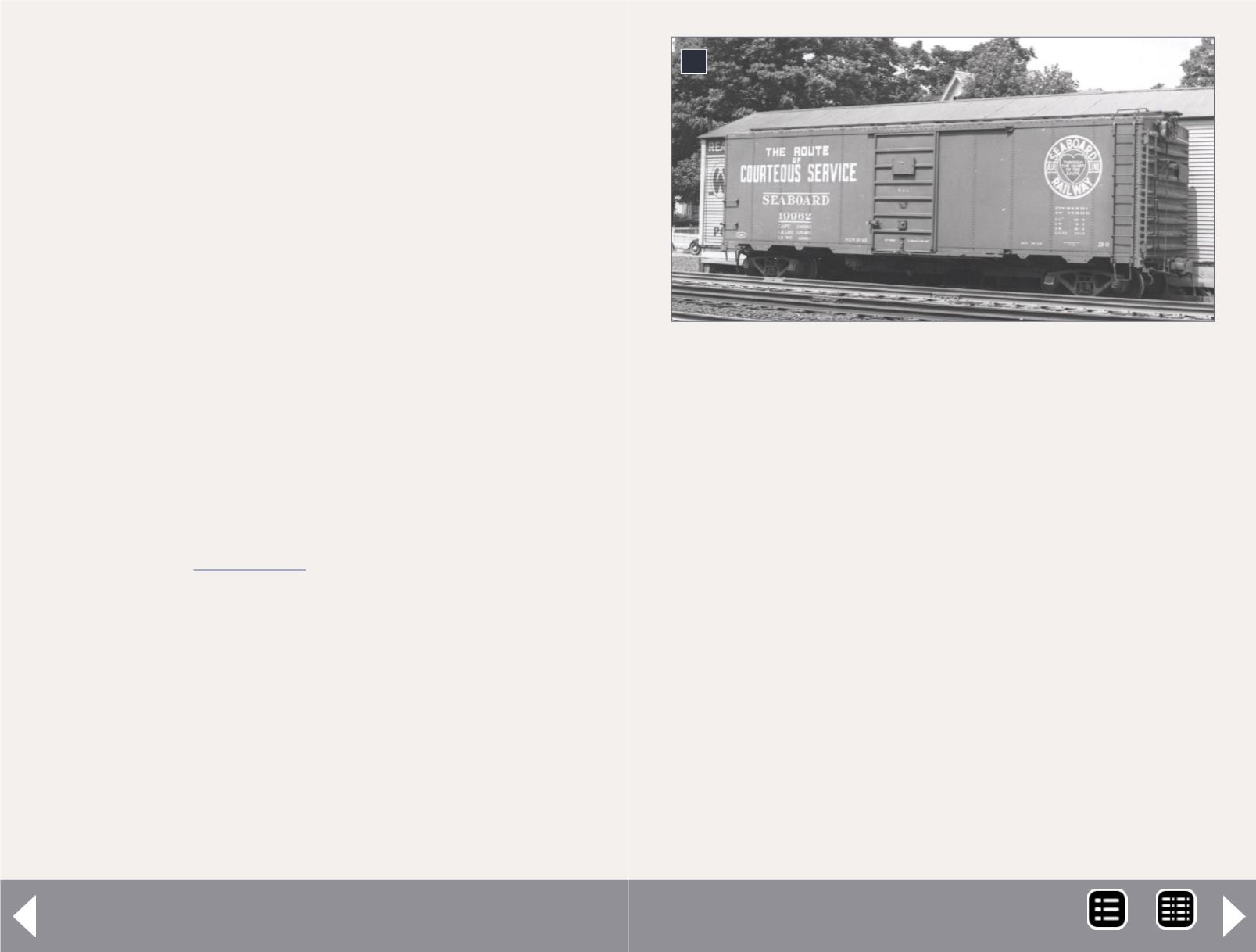
including covered hoppers, phosphate cars, and hopper cars.
Modernization continued during World War II, when Seaboard
received 500 1937 AAR-design all-steel box cars in three lots from
Pullman Car &Manufacturing Co. in Bessemer AL.
The B-8 cars
The 1937 American Association of Railroads (AAR) box car
was an evolutionary improvement over the American Railroad
Association (ARA) 1932 car. The 1937 design featured improved
height (generally 10’ 0” inches interior height), ten-panel riv-
eted sides (five panels on each side of the door, stamped 4-5
two-panel dreadnaught ends, AB-schedule brakes, 6’ door
opening, and a Murphy roof.
The cars were built by many of the major builders, such as
Pullman Standard, Mt. Vernon, American Car & Foundry,
and many others, and many railroads built the cars at their
own shops. Many variations were constructed with differ-
ent roofs, trucks, doors, brake wheels, and other hardware to
suit the individual railroad companies. An excellent primer by
Ed Hawkins on the 1937 AAR box car appeared in RailModel
Journal, July 1991, Vol. 3, No. 2. That magazine is available for
online viewing at
.
The first of Seaboard’s AAR 1937-design cars were delivered in
September 1944 from Pullman Lot 5768, numbered SAL 19500-
19699. The cars were about as standard as they came from
Pullman at that time, with 4-5 dreadnaught ends, Murphy roof,
W-section corners, Youngstown corrugated doors, AB-schedule
brakes, Apex running board and brake step, and an Ajax brake
wheel. Trucks were of the AAR standard type with one-wrought
33-inch diameter wheels.
The cars were painted DuPont SAL Standard Color (freight car
brown) with white stencils, “The Route of Courteous Service”
slogan, and the 56” monogram featuring the word “Railway”
and with a Fire Plug Red heart background. Roofs were coated
with black car cement. The cars were classed as B-8, following
the B-7 single-door turtleback cars in series 19000-19499.
Pullman nomenclature regarded SAL 19500-19699 as “Victory”
cars. The Victory designs were created by the AAR in 1944 in
response to the War Production Board’s permission to resume
all-steel freight car construction during World War II. The War
Production Board originally ordered that Seaboard 19500-
19699 were to be delivered as “war emergency” cars with
steel roofs, ends, underframes and doors and composite sides
similar to other cars delivered to Central of Georgia, Western
2
2. SAL B-9 19962 is nearly new in this Al Armitage
photograph. New B-8 cars were similar but had
different doors, This car has its original paint with the
“Railway” monogram and a “New 10-45” date. This
car is from the last lot of 50 cars, Pullman Lot 5806,
and had a Superior door and US Gypsum running
board and brake step. Al Armitage photo, Ron Morse
collection. Courtesy Richard Hendrickson.
Seaboard B8 & B9 - 2
MRH-Jun 2014


